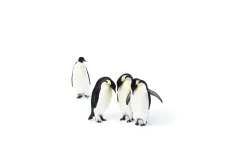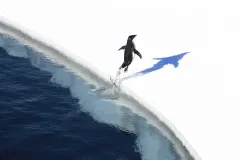Showing results for
"All"
Language
Content type
Article Type
Topics
Tags

Photo
Emperor Penguins on the Ice
Standing at twice the height of the Adélie penguins, emperor penguins are the......
Photo
Adélie Penguin Jumping Out of the Water
Small Adélie penguins live throughout the Antarctic, but are most abundant in the......
Photo
Emperor Penguins
Scripps scientist Gerald Kooyman's expeditions have documented climate-induced......
The Sant Ocean Hall: Life at the Poles Exhibit
Most of you know that the Earth’s poles are cold. But did you know that there are......
September 2011
